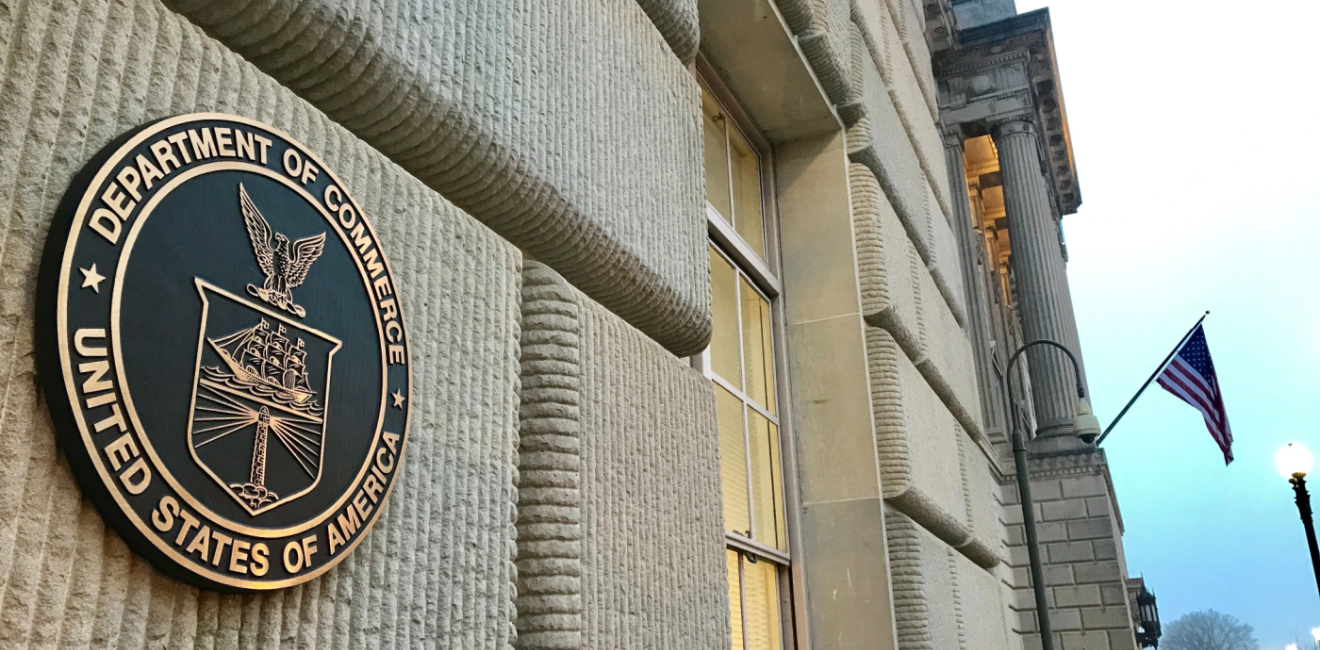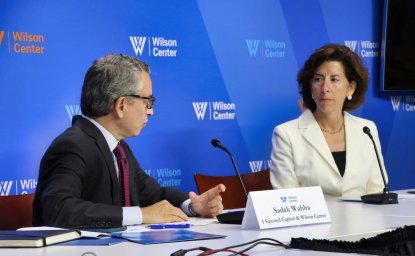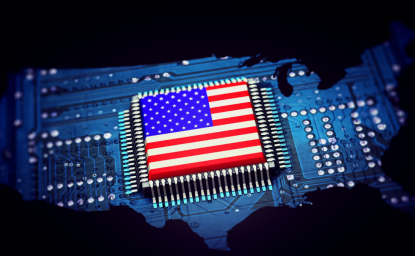Resolving STEM Talent Challenge Must Be on US-China Agenda
Shihoko Goto
Director for Geoeconomics and Indo-Pacific Enterprise and Acting Director, Asia Program
While US - China relations remain fraught, Commerce Secretary Gina Raimondo’s four-day tour of the country was striking for its underlying note of optimism. As expected, there was no breakthrough in bilateral trade relations and no signs the Biden administration would back down on imposing export control on advanced technology and semiconductor manufacturing that has been in place since October 2022. Nor were there expectations for Washington to reverse course on imposing tariffs on Chinese imports. Nevertheless, Raimondo’s visit to China was successful as the beginning of a thaw between the two sides, with both countries recognizing the value of open lines of communication.
Raimondo’s tour followed on the heels of visits by Treasury Secretary Janet Yellen, Secretary of State Antony Blinken, and Climate Envoy John Kerry. The Commerce Secretary’s visit perhaps led to more smiles, not least because of her brief stop in Shanghai Disneyland. At the Chinese outpost of the Magic Kingdom, Raimondo highlighted the continued allure of US soft power, which remains a gaping weakness for the Chinese Communist Party. At the same time, her meeting with Chinese Minister of Culture and Tourism Hu Heping highlighted the need for the world’s two largest economies to encourage people-to-people exchange and tourism between the two countries more broadly.
The US strategic interest, though, must focus more on attracting and retaining top STEM talent worldwide (including China) without jeopardizing its national security. At US universities, there are about 46,000 Chinese undergraduates, 40,000 MA students, and nearly 36,000 doctoral students in STEM fields. This comes as Washington is boosting efforts to invest in the science and technology fields, in which Chinese students play a key role. While the CHIPS Act has come under criticism for not investing the $200 billion it had committed over the next decade quickly enough, the message is clear: universities are eager to invest in advanced and emerging technologies to promote US innovation. While the China challenge has led to greater funding, geopolitics is not the motivating factor for academic researchers.
What is lacking, though, is clarity about how the US is establishing its boundaries with China when it comes to technology competition. As National Security Advisor Jake Sullivan stated in April, Washington clearly needs to establish a “small yard and high fence” to protect US national security, as well as commercial interests. Raimondo’s visit to China did little to clarify precisely where the boundaries lie, which makes it particularly challenging to pinpoint what restrictions should be placed on Chinese STEM students. Valuing greater dialogue between the two countries is a step in the right direction, but it is hardly enough to avoid the pitfalls of meeting US technology needs and to ensure that the US continues to attract and retain the best and brightest from around the globe to further its competitive edge.
Raimondo Affirmed Two Realities
Mark Kennedy
Director, Wahba Institute of Strategic Competition
Much of the debate about how to economically engage the Chinese Communist Party (CCP) exhibits a lack of understanding of what economically benefits or hurts a nation, along with what deters or provokes cataclysmic conflict. US Commerce Secretary Gina Raimondo deserves credit for stressing two realities during her recent visit to China that are important to the US keeping its competitive advantage and deterring aggression.
1. American must “protect what we must and promote where we can.”
If military conflict was certain between the US and the CCP, full decoupling would make sense. Decoupling would increase the likelihood of such conflict because economic integration is one of today’s more significant deterrents. If conflict is averted, a full decoupling would be a bad economic bet for the US. It would forego export sales to China, leaving vacancies for Chinese competitors to emerge to first capture the Chinese market, and then increase competitive pressures on US firms in other markets.
The goal should be to deter aggression. In this case, de-risking makes sense, reducing engagement that creates vulnerabilities, while continuing engagement that remains mutually beneficial. This includes not advantaging the CCP military capability, ensuring resilient supply chains, and properly assessing risks and opportunities.
Companies should not sell products or services that would enhance the CCP’s military capabilities. Given China’s rapidly advancing military and the degree to which commercial technology translates to military advantage, continued focus on economic statecraft measures should be expected.
Supply chain resilience requires diversifying sources for products whose disruption of supply during periods of heightened geopolitical tension would put the nation’s security or broad economy at risk. This includes chokepoints where the US may be overdependent on China for a specific product.
It further means properly assessing the risks of loss of intellectual property, CCP party cells in business operations, having to navigate CCP pushback against complying with US policies, such as restrictions on sourcing from Xinjiang, and the downside risks if the Taiwan Contingency occurs.
Even with these considerations, there are low-risk opportunities to sell to China. As Secretary Raimondo noted at a recent Wilson Center event, “There is no national security risk to the United States selling coffee and health and beauty aids to China.”
2. China is increasingly “uninvestible” because of growing risks
It is difficult to tell who is doing more to give Western firms pause to invest more in China, the US or the CCP. Certainly export controls and the recent executive order on outbound investment by the US are having some effect. Yet, as Secretary Raimondo remarked, "exorbitant fines without any explanation, revisions to the counterespionage law, which are unclear and sending shockwaves through the US community; raids on businesses…" by the CCP are also dissuading further investment. By clamping down on consultants who can provide information that helps companies intending to do business (or doing it) in China more accurately assess risk, the CCP is forcing companies to meet elevated risk-adjusted return standards. With CCP restrictions on cross-border data flows, operations in China become more costly and less attractive. Much of the increased risks businesses face are the result of CCP actions.
The Elusive Floor in US-China Competition
Prashanth Parameswaran
Global Fellow, Wahba Institute for Strategic Competition
Optics-wise, US Commerce Secretary Gina Raimondo’s visit to China is the latest high-level US visit to the country and another small step in both sides trying to find an elusive floor amid of US-China competition. Yet the burning question in much of the Indo-Pacific region is whether there will be a successful in-person meeting between US President Joe Biden and Chinese President Xi Jinping that would finally define the floor in the US-China relationship at the leadership level. A successful Biden-Xi meeting would provide a measure of reassurance for countries that competition is at least being managed to some degree. In key Indo-Pacific capitals, it is already commonplace to hear officials lament, sometimes even publicly, that some variant of “extreme competition” is the most likely scenario for the foreseeable future. It is also not lost on close observers that the calls for more reciprocity in high-level exchanges in some parts of Washington, and suggestions of weakness on the part of the Biden administration, are testament to how fraught US-China relations remain ahead of US elections in November 2024.
Substantively, Raimondo’s visit saw scant progress, Indeed, she downplayed expectations on the new announcements such as a new working group, information exchange and technical discussion track by noting that “actions speak louder than words.” For all the talk, both sides also remain far apart on thorny issues that include US export controls and Chinese treatment of US businesses. At the same time, even agreeing to establishing regular lines of communication is no small feat given the current state of bilateral ties, particularly since this the first visit by a US Commerce Secretary in more than five years. Indeed, China has at times expressed disinterest in the US effort to establish guardrails for the relationship that advocates for so-called “managed strategic competition” that have been suggested as part of a floor in US-China ties.
The broader issue of interest to the Indo-Pacific region is how US-China dynamics will affect the outlook for US businesses, particularly in the wake of China’s recent economic woes and given Beijing’s importance to wider regional economic growth. Thus far, that outlook seems quite pessimistic. As just one example, survey data from the US Chamber of Commerce in China published in March indicates that the percentage of US businesses that believe US-China ties will deteriorate has nearly doubled from 2022 to 2023, going 24 percent to 46 percent. Yet some countries, particularly emerging Asian economies such as Vietnam and Malaysia, will also see opportunities if businesses choose to relocate some of their operations and shift their supply chains. Indeed, it is worth noting that U.S. businesses in the aforementioned survey saw developing Asia as the next target destination for relocated capacity from China after the US. As such, as both Washington and Beijing search for a stable floor in their bilateral ties, the balance of opportunities and challenges the US-China relationship offers will continue to be carefully watched across the Indo-Pacific region.








